Everybody says that daffodils are spring flowers, but it’s nearly summertime, and yours haven’t bloomed yet! What gives? When daffodils bloom outside of spring or don’t bloom at all, there are likely two main reasons. First, the peak season for daffodils might not be spring in your Hardiness Zone. And second, the conditions in which your daffodils grow may not be ideal for healthy plants.
Keep reading to learn more about the types of daffodils, their peak season by Zone, and what to do if your bulbs need extra support to thrive.
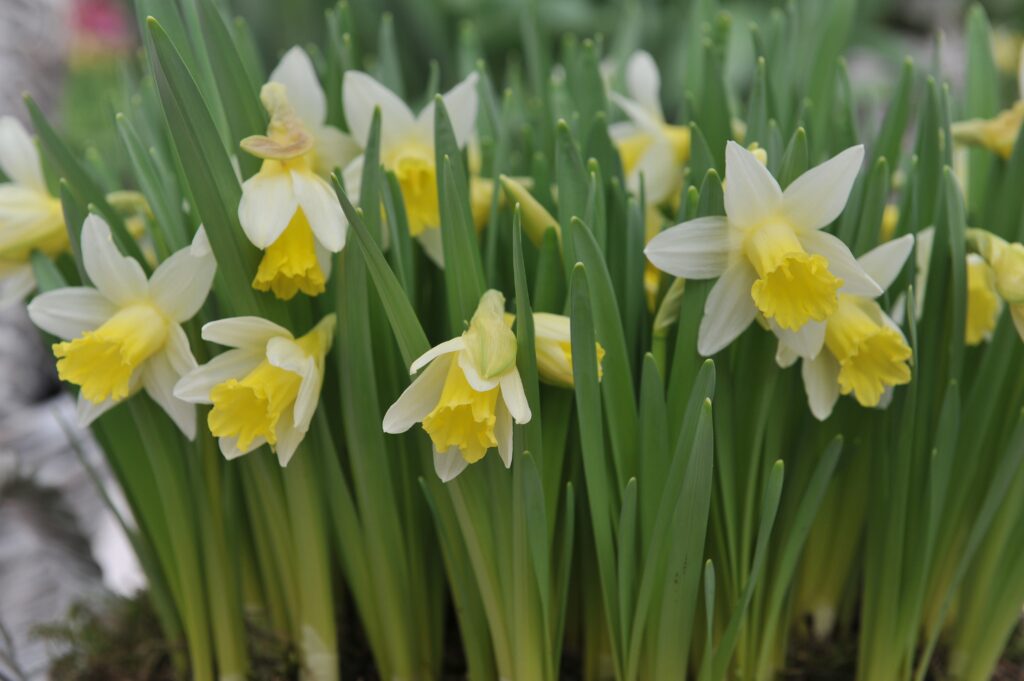
Daffodils usually bloom in the spring, but the timing depends on the cultivar and your growing Zone.
©Sergey V Kalyakin/Shutterstock.com
Different Types of Daffodils
Daffodils are flowering perennials that grow from bulbs. They belong to the Narcissus genus and typically bloom in spring, depending on your local growing Zones.
However, there are many different types of daffodils! Becoming familiar with standard daffodil classifications helps growers determine which ones fit best with their climate and garden style goals. The best way to do that is by learning about the 13 daffodil classifications, called divisions.
The 13 Daffodil Divisions
There are so many types of daffodils available today that trying to learn about their growth habits can be overwhelming. We recommend using the daffodil classification system as your guide.
Each division groups daffodils (whenever possible) with similar flower styles and growth habits. For example, we know from daffodil division #4 that double daffodils have one or multiple flowers per stem, with doubled perianth segments (petals) or coronas (cups), or both.
First developed by the Royal Horticultural Society, the 13 daffodil divisions lead us to specific types of plant cultivars we want to grow. Then, each cultivar helps us determine whether or not this particular daffodil will be a healthy plant in our local climate. For example, we know from researching double daffodil cultivars that many of them bloom in mid to late spring in their ideal climate of Zones 3-9.
Here’s a quick list of the 13 daffodil divisions and the types of daffodils you will find in each. For more information, our website offers many daffodil articles for your convenience!
- Division #1: Trumpet Daffodils
- Division #2: Large-Cupped Daffodils
- Division #3: Small-Cupped Daffodils
- Division #4: Double Daffodils
- Division #5: Triandrus Daffodils
- Division #6: Cyclamineus Daffodils
- Division #7: Jonquilla Daffodils
- Division #8: Tazetta Daffodils (better for warmer climates)
- Division #9: Poeticus Daffodils
- Division #10: Bulbocodium Daffodils
- Division #11a: Split-Cupped Collar Daffodils
- Division #11b: Split-Cupped Papillion Daffodils
- Division #12: Other Daffodil Cultivars
- Division #13: Daffodils Only Classified by Botanical Name
Once you research the types of daffodils you want to grow from the 13 daffodil divisions, you need to know your local Hardiness Zones before planting.
If you’re unfamiliar with U.S. growing Zones, keep reading to learn more about how to determine yours.
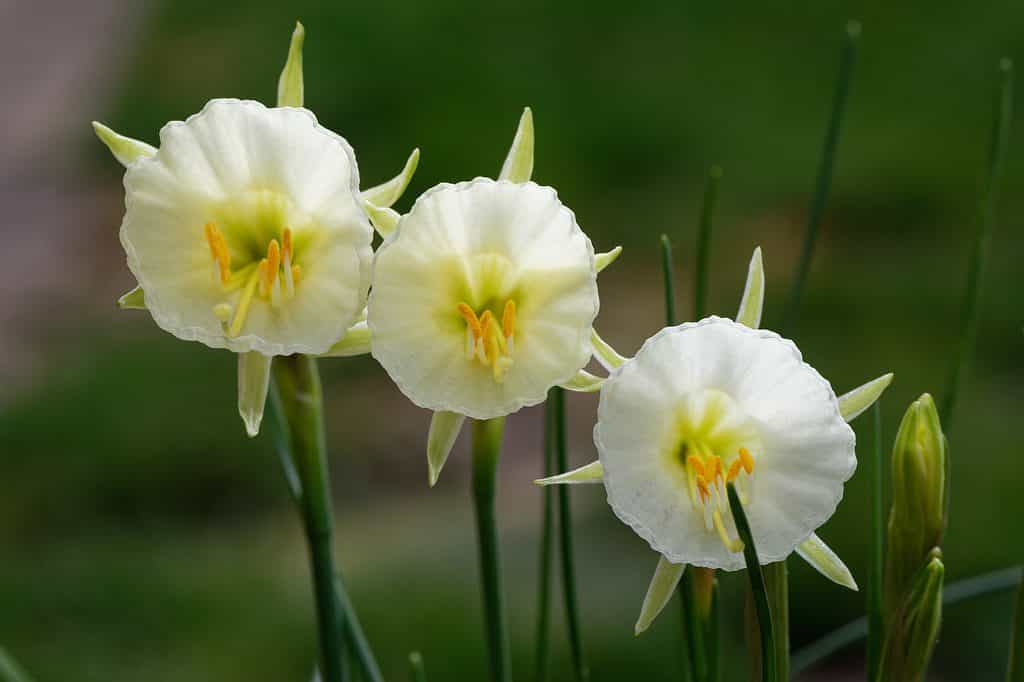
Bulbocodium daffodils might bloom as early as late winter, depending on the cultivar and growing Zone.
©Walter Erhardt/Shutterstock.com
What is My Hardiness Zone?
Knowing your local climate’s lowest average annual temperatures is essential for helping your daffodils and other plants flourish.
Consulting the USDA Hardiness Zone Map is a great place to start. This convenient map divides the U.S. into growing zones based on each region’s lowest average winter temperatures.
Why is it important to know the local lowest average annual temperature? Some plants can survive a cold winter dormancy, and some cannot. Some cultivars are more cold-hardy, while others require tropical climates to survive.
Daffodils need about 14–15 weeks of dormancy each year at 55 degrees or lower. Then, they need another 3–4 weeks of warmer temperatures before they can bloom. If your local climate cannot provide those conditions for daffodil bulbs, your plants might not produce flowers.
Now, let’s look at daffodil peak season by Zone to see how different climates might change the timing of daffodil blooms.
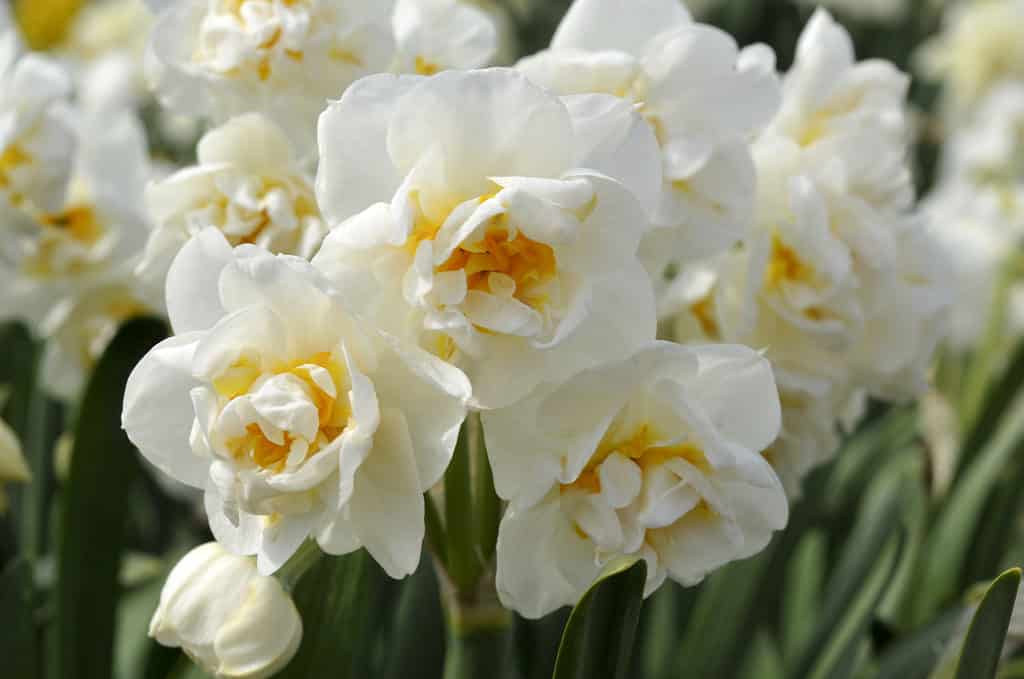
Most double daffodils bloom in the spring in Zones 3–9, depending on the cultivar.
©Wiert nieuman/Shutterstock.com
Zones 2a-2b: Spring
It’s important to note that the coldest Zone recommended for growing daffodils is Zone 3. This recommendation is because the lowest average temperatures in Zones 1-2 can be way too cold for daffodil bulb survival.
However, some gardeners in Zones 2a–2b produce beautiful flowering daffodils year after year. And you can always dig up your daffodil bulbs to store indoors (at ideal cold dormancy temperatures) to plant again next year.
Make sure you plant cold-hardy daffodils in Zone 2. For example, it is doubtful that tazetta daffodils will survive in Zones 2a–2b. But a hardy trumpet daffodil, like Narcissus ‘Unsurpassable’, would have a much better chance of producing gorgeous blooms in early spring in these colder Zones.
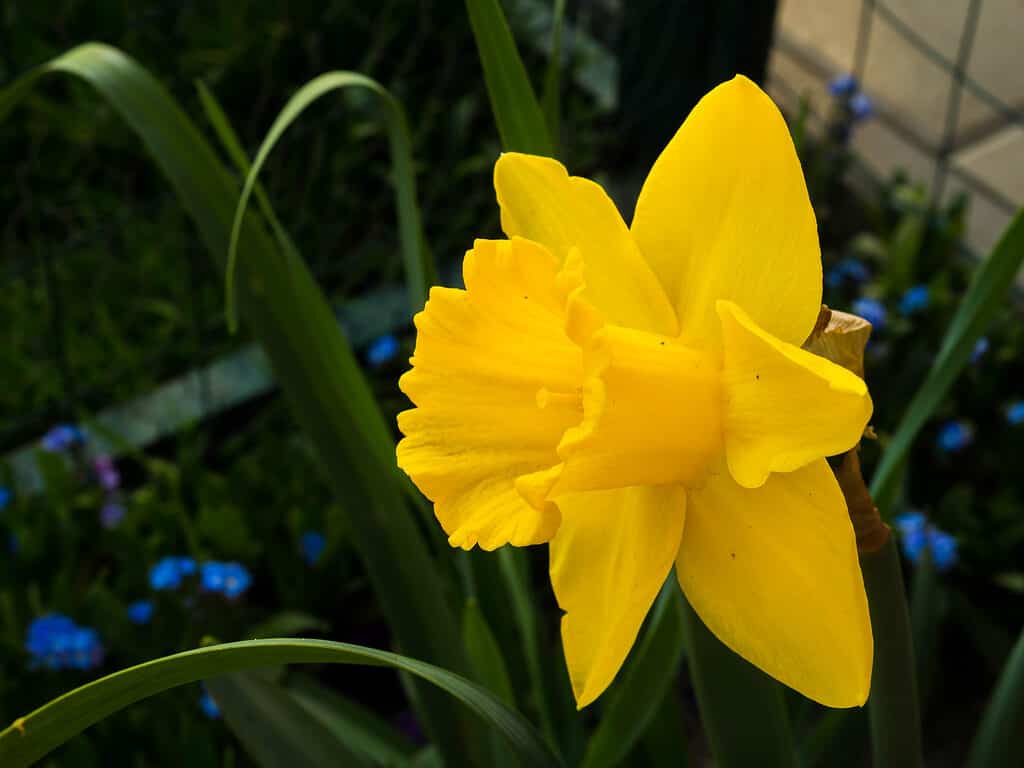
Classic trumpet daffodils like ‘Unsurpassable’ are usually hardy in Zones 3–9 and bloom in mid to late spring.
©monikozi/Shutterstock.com
Zones 3a-3b: Spring
Depending on the cultivar, daffodils in Zones 3a–3b bloom in mid to late spring.
Many types of daffodils thrive in Zone 3, including trumpet, large-cupped, and double cultivars. Also, the poeticus daffodil cultivar Narcissus ‘Actaea’ blooms in mid to late spring in Zones 3–9.
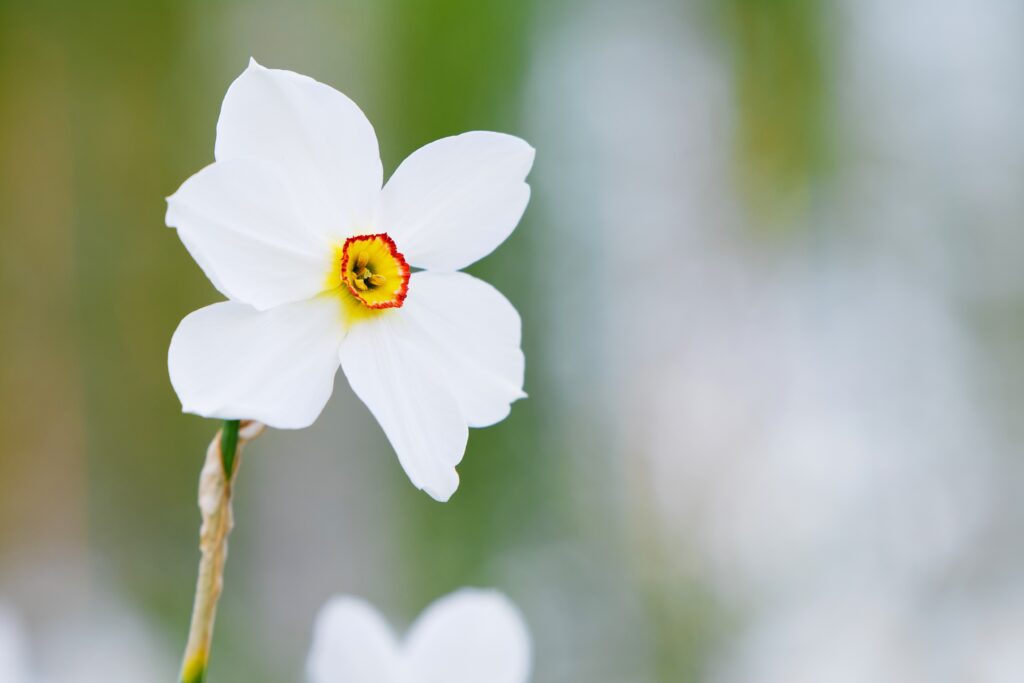
The
Narcissus‘Actaea’ poeticus daffodil thrives in Zone 3 and blooms in mid to late spring.
©Erkki Makkonen/Shutterstock.com
Zones 4a-4b: Spring
Daffodils in Zones 4a–4b bloom in mid to late spring, depending on which cultivars you grow.
Like Zone 3, USDA Hardiness Zones 4a–4b are ideal for a high percentage of daffodil bulbs. Cultivars for this Zone are almost unlimited, so go wild with different daffodil types in your garden!
Steer clear of tazetta daffodils in these Zones, but delight in growing a wide variety of plants, from trumpet to jonquilla daffodils. If you love jonquils, plant some stunning all-yellow Narcissus ‘Quail’ jonquilla daffodils that are hardy in Zones 4–9 and bloom mid-spring.
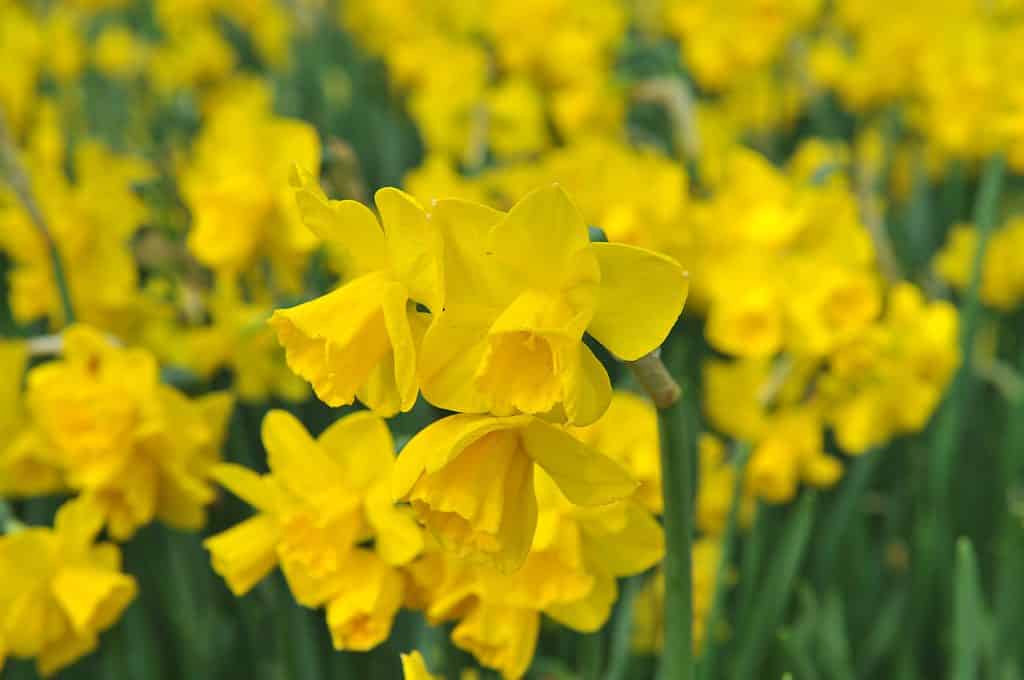
Jonquilla daffodils like
Narcissus‘Quail’ bloom in mid-spring in Zones 4–9.
©Sergey V Kalyakin/Shutterstock.com
Zones 5a-5b: Spring
Most daffodils in Zones 5a–5b do well in this climate and bloom in mid to late spring, depending on the plant cultivar.
For Zones 5a–5b, the sky is the limit for daffodil choices! We recommend some showy large-cupped daffodils, like the peach-cupped Narcissus ‘Accent’ that blooms mid-spring for Zones 3–8.

Large-cupped daffodils like
Narcissus‘Accent’ bloom in mid-spring in Zones 3-8.
©sebastianosecondi/Shutterstock.com
Zones 6a-6b: Spring
Daffodils produce flowers in mid to late spring in Zones 6a–6b, depending on the flower cultivar.
These mid-range Zones still have ideal daffodil climates, so plant as many as you like! Try some dainty miniature cyclamineous daffodils to add charm to your spring garden beds. We recommend the Narcissus ‘Jack Snipe’ for its bicolor (yellow and white) beauty. This sweet daffodil blooms in early to mid-spring for Zones 3–9. It also won the Royal Horticultural Society’s Award of Garden Merit!
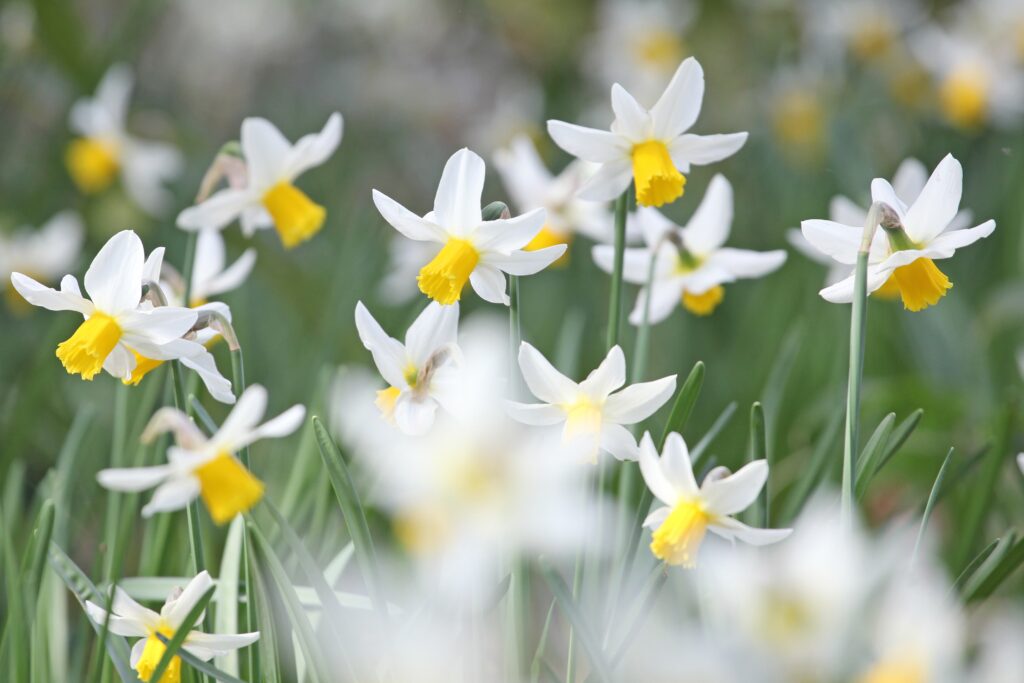
Cyclamineous miniature daffodils like ‘Jack Snipe’ bloom in mid to late spring in Zones 3–9.
©Alex Manders/Shutterstock.com
Zones 7a-7b: Spring
Though Zones 7a–7b are nearing the top of a daffodil’s cold-hardy range, this region is still ideal for producing flowering daffodils. Most daffodils thrive in this climate, including trumpets, large-cupped, small-cupped, double, and triandrus daffodils.
For some dainty, drooping blooms with elegant style, try growing the Narcissus ‘Hawera’ triandrus daffodils. These pale yellow daffodils bloom in mid to late spring for Zones 3–9. They also have a delightful fruity scent!
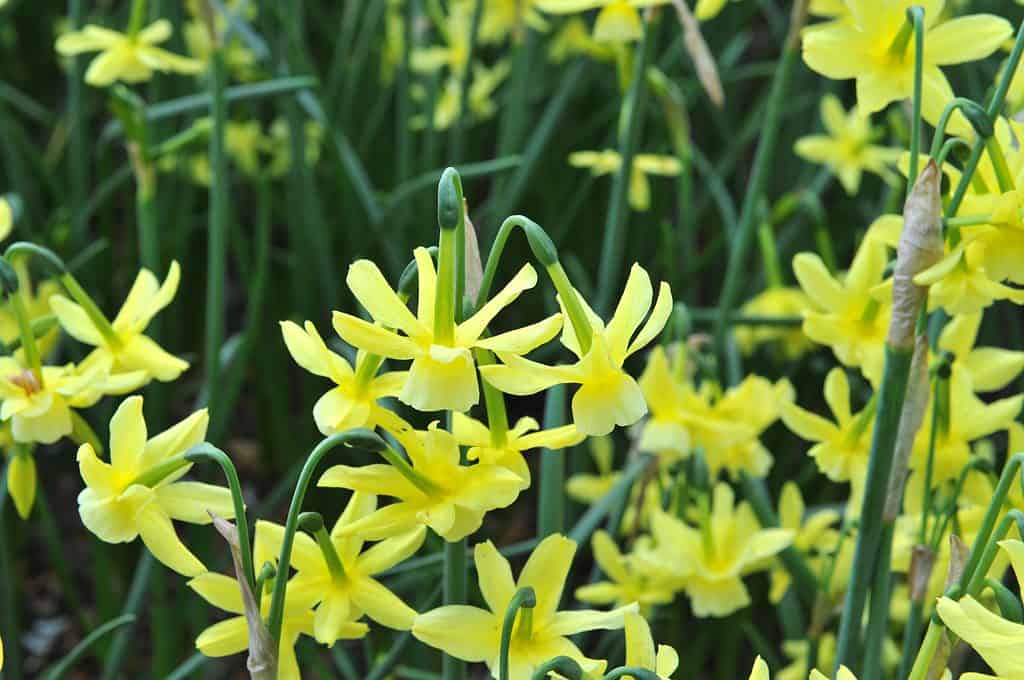
‘Hawera’ triandrus daffodils are mid to late spring bloomers in Zones 3–9.
©Sergey V Kalyakin/Shutterstock.com
Zones 8a-8b: Spring
Many daffodil cultivars thrive in the warmer climate of Zones 8a–8b and bloom in mid to late spring. However, Zones 8 and above might be too warm for some plants, so always check the cultivar’s hardiness information first.
The warmer climate of Zones 8–9 is also ideal for warmth-loving tazetta daffodils. For example, the Narcissus ‘Silver Chimes’ blooms in mid to late spring for Zones 6–9.

Tazetta daffodils like
Narcissus‘Silver Chimes’ grow best in warmer climates, where they bloom in mid to late spring.
©Joe Kuis/Shutterstock.com
Zones 9a-9b: Late Winter, Spring
Daffodils that thrive in Zones 9a–9b could bloom between late winter and late spring, depending greatly on the plant type and cultivar. However, the climate in Zone 9a is usually better for daffodils than the hotter temperatures in Zone 9b.
The tazetta daffodil (great for Southern climates) Narcissus ‘Ziva’ can produce flowers as early as late winter in Zones 8–11.

Narcissus ‘Ziva’ tazetta daffodils sometimes bloom in late winter in Zones 8–11.
©iStock.com/akit
Zones 10a-12b:
Unfortunately, Zones 10a–12b have climates that are typically way too warm for daffodils to survive and produce flowers year after year.
Your best bet for Zones 10–11 is to grow tazetta daffodil cultivars like the Narcissus ‘Grand Soleil d’Or’ that bloom in early spring for Zones 8–11.
Other types of daffodils might be grown in these Zones as annual flowers in garden plots and indoor containers.
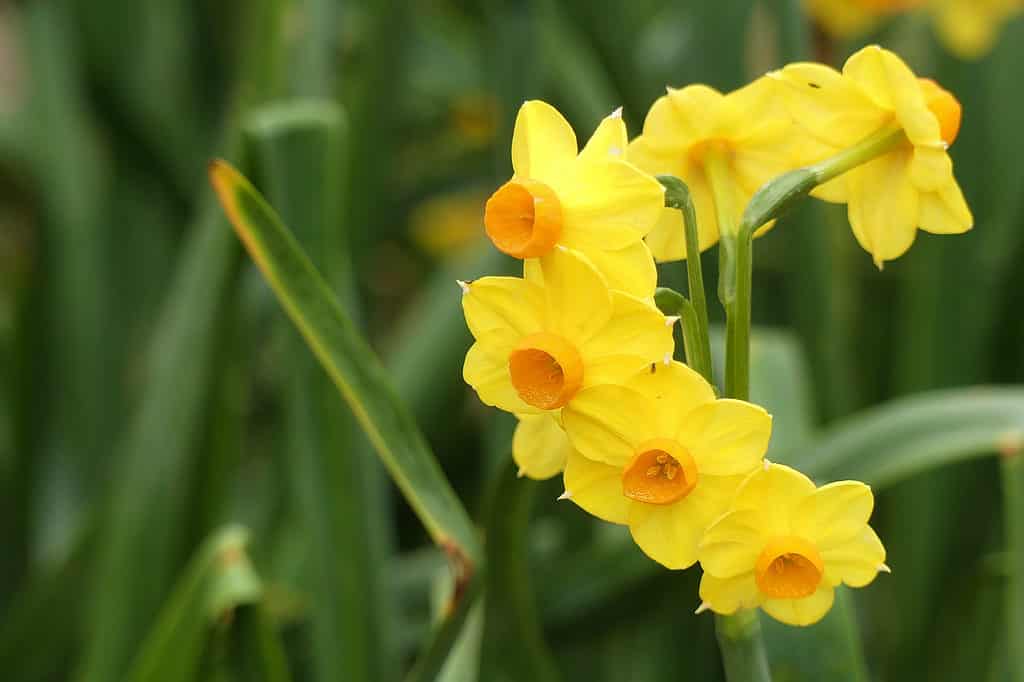
‘Grand Soleil d’Or’ tazetta daffodils bloom in early spring when growing in Zones 8–11.
©fernandoul/Shutterstock.com
When Daffodils Don’t Bloom
You’re sure the daffodils you planted are hardy for your local climate, but they aren’t blooming. What do you do? Check the following conditions that might affect your plants’ ability to produce flowers:
- Check your daffodil bulbs for crowding. Over the years, daffodil bulbs will multiply and crowd each other to the detriment of their flower power. Plants that aren’t blooming might need more space to grow. Dig them up, divide them, and replant the bulbs now and then for best results.
- Check the soil’s nutrients and pH level. Daffodils may need more potassium or a different balance of nutrients than your soil provides. Or your soil pH isn’t in the ideal range (6.0 to 7.0) for daffodil bulbs. You could test your soil’s nutrients and pH with a home tester kit. You could also add some daffodil-specific fertilizer and see if that gives your plants the boost they need to bloom.
- Check for overwatered plants. Daffodil roots shouldn’t get soggy, or they might rot—only water daffodils when their soil feels dry (about once a week).
- Check their sunlight exposure. Are you daffodils getting at least six hours of full sun every day? If not, transplant them to an area where they do. With ample sunlight, daffodils will provide you with more of their sunny, charming blooms.
- Check for signs of heat stress. Yes, daffodils need full sun but don’t do well in high heat for prolonged periods. If you notice that their leaves are looking a bit scorched, it’s time to give your daffodils some heat relief. During the hottest weeks, you may need to provide them with more shade for healthier flowering.
Keep your daffodils blooming and prolong their blooms by taking great care of the plants in ideal conditions!
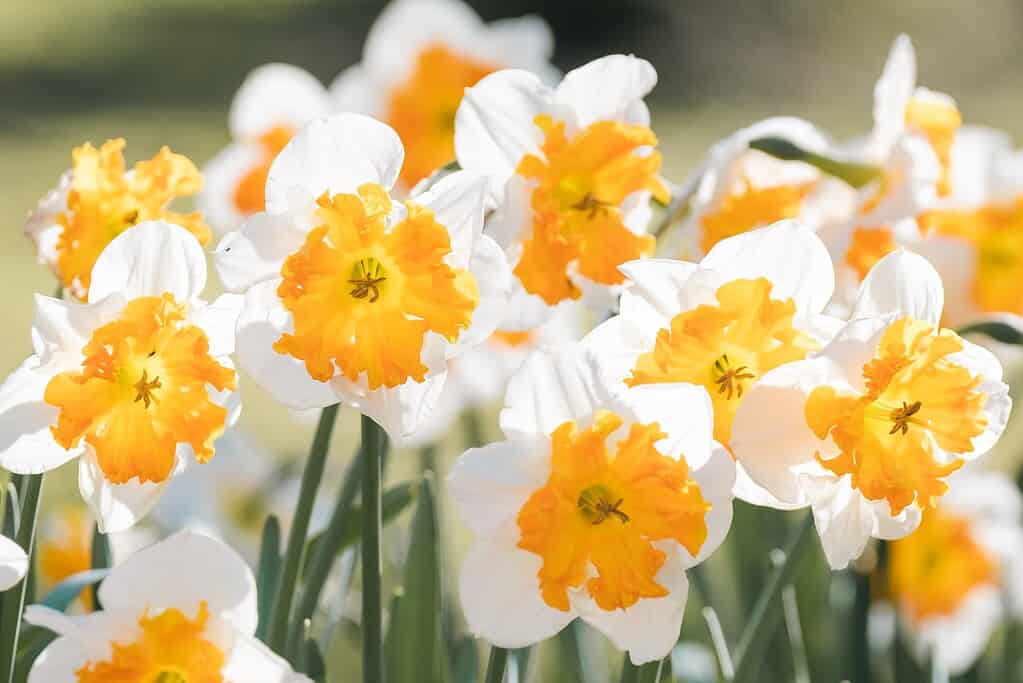
Daffodils need at least six hours of full sun each day to produce as many flowers as possible.
©Jordan Comley/Shutterstock.com
Life gets brighter when daffodils bloom.
We can all agree that daffodils make life look and feel brighter, so bring on those happy blooms! Knowing your Hardiness Zone and how to grow daffodils in your climate are the keys to learning when they bloom in your local region. Then, pay attention to each daffodil cultivar’s growing instructions for its unique bloom timing.
Remember: though many daffodils bloom in mid to late spring, these cold-hardy bulbs usually grow best in Zones 3–9, with some exceptions like tazetta cultivars.
The photo featured at the top of this post is © Andrew Fletcher/Shutterstock.com
Thank you for reading! Have some feedback for us? Contact the AZ Animals editorial team.






